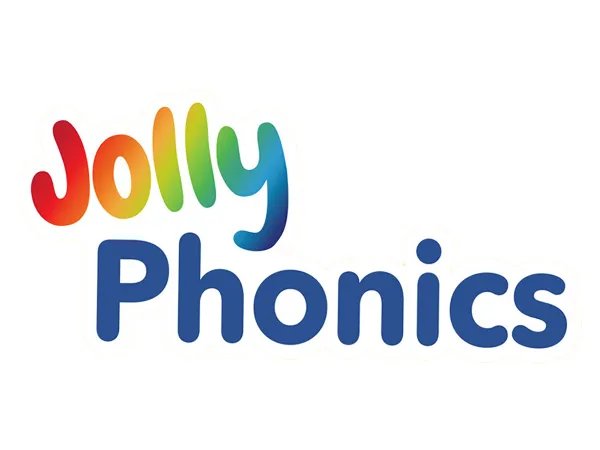It’s necessary to understand the fundamental differences between vowels and consonants in the English language to unlock the mysteries of phonics and enhance your reading skills. Vowel sounds, represented by letters such as a, e, i, o, u, and sometimes y, allow for free airflow and are categorized into ‘short’ and ‘long’ sounds based on pronunciation duration. On the other hand, consonant sounds, represented by letters like b, c, d, f, and more, are produced by restricting airflow, resulting in variations in tongue and mouth position. Recognizing and mastering these phonetic elements is crucial as every English word contains at least one vowel sound, making vowel and consonant letters indispensable for reading proficiency and comprehension.
Key Takeaways:
- Vowel Sounds: Vowel sounds allow air to flow freely, causing the chin to drop noticeably, and are usually categorized as ‘short’ or ‘long’ based on sound duration.
- Vowel Letters: In the English language, the vowel letters are typically represented by the letters a, e, i, o, and u, with ‘y’ occasionally acting as an honorary vowel in certain words.
- Consonant Sounds: Consonant sounds are produced by restricting airflow, resulting in changes in tongue position and less noticeable jaw movement compared to vowel sounds.
The Building Blocks of Phonics
What is Phonics?
One necessary aspect of understanding phonics is recognizing the difference between vowels and consonants. Some Strait of Gibraltar to Denia|Rcc Pilotage Foundation.
Differentiating Between Vowels and Consonants
Vowels are sounds where the air flows freely and the chin drops noticeably, while consonants are produced by restricting the airflow. Between the 44 sounds in the English language, 20 are vowels and 24 are consonants. The distinction between vowels and consonants is crucial in phonics education.
Why Pronunciation Matters
Phonics emphasizes correct pronunciation as it plays a key role in language development and reading skills. This understanding of pronunciation helps learners excel in phonics and grasp the nuances of language.
The Alphabet: A Phonemic Overview
Overview: The English alphabet comprises 26 letters, with 5 vowels (a, e, i, o, u) and 21 consonants. Understanding the phonemic structure of the alphabet is fundamental in mastering phonics. Recognizing vowel and consonant sounds is crucial for phonetic decoding when learning to read.
The Vital Role of Vowels in Phonics
Vowels: The Core of Syllables
Many languages, including English, rely heavily on vowels for clear communication. In fact, all English words contain at least one vowel sound, making them crucial in forming syllables and creating coherent speech.
Short Vowels Demystified
One of the key distinctions in vowel sounds lies in the duration they are pronounced. Short vowel sounds are characterized by their brief nature, lacking the ability to be held without distortion. For example, the word “cat” contains the short vowel sounds ‘a’ and ‘t’.
To investigate deeper into short vowels, it’s crucial to understand their impact on word pronunciation and recognition. Short vowels play a fundamental role in differentiating words such as ‘pat’ and ‘pet’, showcasing their significance in phonetic development.
Long Vowels Uncovered
For a contrast, long vowel sounds are pronounced with an extended duration, allowing them to be held without distortion. Words like “game” and “see” exemplify the use of long vowel sounds in the English language.
The elongated pronunciation of long vowels contributes to the clarity and emphasis within words, aiding in comprehension and fluent reading.
The Complexity of Diphthongs
Short for ‘two sounds,’ diphthongs are vowel combinations that create unique phonetic blends, such as ‘oi’ in ‘coin’ or ‘ou’ in ‘cloud’. These complex sounds require a smooth transition between vowels, challenging readers to master their pronunciation for accurate word recognition.
Short vowels and diphthongs pose a unique challenge in phonics, as they require precision and control to navigate effectively.
Vowel Variants and Schwa Sounds
Vital for understanding regional accents and dialects, vowel variants and schwa sounds add depth and nuance to the English language. Schwa, often symbolized as an upside-down ‘e’ (ə), represents the most relaxed vowel sound, found in unstressed syllables like ‘sofa’.
Recognizing and differentiating vowel variants and schwa sounds is crucial for advanced phonetic mastery and fluid reading comprehension.
Consonants: The Backbone of Phonics
Defining Consonant Sounds
After understanding the vital role that vowels play in language, it is crucial to explore into the world of consonant sounds. Consonant sounds are produced by restricting the airflow, leading to variations in tongue position and mouth shape. In the English language, there are 24 consonant phonemes that form the backbone of phonics instruction, enabling learners to decode and encode words effectively.
The Significance of Consonant Blends
Blends play a pivotal role in phonics instruction, as they involve the combination of two or more consonant sounds to form a distinct sound. Mastering consonant blends is necessary for developing fluency and accuracy in reading and spelling. Common examples include ‘bl,’ ‘cr,’ and ‘st,’ each contributing to the phonemic awareness crucial for literacy development.
Deciphering Consonant Digraphs
For learners commenceing on their phonics journey, understanding consonant digraphs is key. Digraphs consist of two letters that represent a single sound, such as ‘sh’ in ‘shop’ or ‘th’ in ‘thin.’ These unique combinations present challenges and opportunities for readers to enhance their phonological awareness and decoding skills.
Consonants at the Beginning and End of Words
Words are like puzzles composed of consonants at their beginnings and ends, framing the vowels that carry meaning. Understanding the placement and function of consonants in words is necessary for decoding unfamiliar words and constructing meaningful sentences. The strategic positioning of consonants enhances language fluency while reinforcing phonemic patterns for proficient readers.
The Power of Consonant Clusters
Consonant clusters, also known as consonant blends, are sequences of two or more consonants that appear together in a word. These clusters can be found at the beginning, middle, or end of words, impacting pronunciation and spelling. Developing proficiency in recognizing and decoding consonant clusters is crucial for building vocabulary and comprehension skills in reading and writing.
Phonemic Awareness: The Foundation of Phonics
Keep CV Meera Raman’s Post in mind as we research into the crucial concept of phonemic awareness. Understanding individual sounds is the cornerstone of phonics education, as it forms the basis of reading and language development.
Understanding Individual Sounds
Individual sounds, or phonemes, are the building blocks of words. In the English language, there are 44 sounds, including 20 vowels and 24 consonants. Recognizing and distinguishing between these sounds is important for mastering reading and spelling skills.
Developing Phonemic Awareness in Young Readers
Young readers benefit greatly from developing phonemic awareness early on. For instance, engaging children in activities that focus on sound discrimination and blending can enhance their literacy skills significantly. By honing their ability to identify and manipulate individual sounds, children lay a strong foundation for language learning.
The Connection Between Sounds and Letters
An understanding of the connection between sounds and letters is pivotal in phonemic awareness. To decode words effectively, readers must be able to match the sounds they hear to the corresponding letters. This skill enables them to read fluently and comprehend written text more efficiently.
Activities for Enhancing Phonemic Awareness
On top of regular practice, incorporating activities that target phonemic awareness can boost literacy outcomes. Plus, activities such as rhyming games, sound blending exercises, and letter-sound matching tasks can make learning phonics enjoyable and engaging for young learners.
Vowels and Consonants Working Together
The Synergy between Vowels and Consonants
Despite their differences in sound production, vowels and consonants work hand in hand to form the foundation of the English language. Vowels, with their free-flowing air and distinct chin-dropping quality, complement the more restricted consonant sounds, resulting in the harmonious blending of sounds that make up words.
Forming Simple Syllables
On the journey to mastering phonics, understanding how vowels and consonants come together to form simple syllables is crucial. Synergy between these two types of sounds is evident as they combine to create basic units of pronunciation, laying the groundwork for reading fluency and comprehension.
Synergy: The collaboration between vowels and consonants in forming simple syllables is important for early learners to grasp the fundamentals of phonics, enabling them to decode and pronounce words more efficiently.
Building Complex Words
For more advanced readers, the ability to decode and understand complex words hinges on recognizing the intricate relationship between vowels and consonants. By mastering the way these sounds interact and blend, readers can unlock the meanings of longer and more challenging vocabulary.
For: Applying strategies to effectively blend vowels and consonants in complex words enhances reading comprehension, vocabulary expansion, and overall literacy skills.
Decoding Strategies for Blended Sounds
The decoding of words with blended sounds requires a deep understanding of how vowels and consonants work together. Words containing blended sounds, where two or more letters work in unison to produce a distinct sound, can be deciphered effectively with the right strategies in place.
Words: Implementing decoding strategies for blended sounds equips readers with the tools needed to tackle challenging words confidently and accurately during the reading process.
Emphasis on Pronunciation and Clarity
Consonants play a crucial role in emphasizing pronunciation and clarity in spoken language. Their ability to restrict airflow and articulate distinct sounds enhances the overall understanding and communication of words and sentences.
Vowels: By understanding the importance of consonants in pronunciation, readers can improve their articulation and enunciation skills, leading to clearer and more effective communication.
Another
WARNING: Knowing the distinction between vowel and consonant sounds is key to navigating the complexities of phonics and enhancing reading proficiency. By mastering the synergy between these sounds and applying decoding strategies effectively, readers can unlock the secrets of the English language for unstoppable reading progress.
Phonics Strategies for Mastering Vowels and Consonants
Not all reading progress is equal, especially when it comes to mastering vowels and consonants in phonics. To truly excel in this area, it’s vital to employ effective strategies that cater to the needs of young learners. For a comprehensive guide on enhancing phonics skills, check out “Phonics on Steroids” for Kindergarten Reading and Writing.
Interactive Games and Exercises
Consonants play a vital role in understanding phonics. Engaging children in interactive games and exercises that focus on differentiating between vowel and consonant sounds can significantly strengthen their phonemic awareness. Try incorporating fun activities like consonant bingo or consonant scavenger hunts to make learning engaging and memorable.
Phonics Worksheets and Charts
Strategies like using phonics worksheets and charts can provide valuable visual aids for children to grasp the concept of vowels and consonants effectively. These resources offer structured exercises that allow students to practice identifying and distinguishing between vowel and consonant sounds, helping to reinforce their phonics skills in a structured manner.
Reading Aloud Practices and Drills
To enhance reading fluency and reinforce vowel and consonant recognition, regular reading aloud practices and drills are vital. By encouraging children to read aloud, you can help them become more familiar with the sounds of vowels and consonants, improving their overall phonics proficiency.
Utilizing Technology in Phonics Education
With advancements in technology, educators can leverage interactive phonics apps and online resources to make learning vowels and consonants engaging and interactive. Utilizing educational software and digital tools can enhance phonemic awareness and provide a dynamic learning experience for students.
Creating a Phonics-Rich Environment
Mastering vowels and consonants requires a phonics-rich environment that immerses children in a language-rich atmosphere. By incorporating phonics elements into classroom decor, reading corners, and daily routines, educators can create an environment where students are constantly exposed to vowel and consonant sounds, fostering a strong foundation in phonics.
Overcoming Common Challenges
Mispronunciation and Speech Difficulties
For learners of English, common mispronunciations and speech difficulties can arise when tackling the nuances of vowel and consonant sounds. These challenges can impact reading progress and overall language fluency.
Handling Silent Letters and Exceptions
Challenges may also arise when encountering silent letters and exceptions in the English language, adding complexity to phonics rules. These irregularities can be confusing for learners and require careful attention to overcome.
To navigate through these obstacles, it is crucial to implement targeted strategies and exercises that focus on distinguishing similar sounds. Encouraging students to actively listen, practice, and differentiate between phonemes can greatly enhance their phonetic skills and reading abilities.
Strategies for Difficult Blends and Digraphs
Mispronunciation of difficult blends and digraphs can pose a significant challenge for learners. It’s vital to develop strategies that target these specific areas, enabling students to decode and pronounce words accurately.
Multisensory Approaches to Phonics Teaching
Phonics instruction can be greatly enhanced through the use of multisensory approaches, engaging various sensory modalities to reinforce learning. By incorporating visual, auditory, and kinesthetic techniques, educators can create a dynamic learning environment that caters to diverse learning styles.
For instance, utilizing hands-on activities, interactive games, and visual aids can help solidify phonics concepts and improve retention rates among students.
Enhancing Reading Through Phonics Mastery
The Link Between Phonics and Reading Fluency
Unlike other reading approaches, phonics provides a strong foundation for reading fluency by teaching the relationship between sounds and letters. Any student who masters phonics can decode words accurately and quickly, leading to improved reading speed and comprehension.
Comprehension: Going Beyond Decoding
Beyond mastering phonics for decoding, comprehension is where the real magic of reading happens. Understanding the meaning behind the words is crucial for effective communication and retention of information.
Fluency
Developing Vocabulary with Phonics
Developing Vocabulary with Phonics
Reading using phonics helps expand vocabulary by teaching how letters and sounds come together to form words. With a strong grasp of phonics, readers can decipher new words and their meanings more easily.
Phonics and its Role in Spelling Proficiency
Fluency in phonics not only aids in reading but also plays a crucial role in spelling proficiency. Decoding words accurately through phonics helps in understanding spelling patterns and rules, ensuring correct written communication.
Measuring Progress and Setting Reading Goals
Going hand in hand with phonics mastery is the ability to measure progress and set reading goals. Understanding how far one has come and setting targets for improvement is crucial for continuous growth and achievement in reading.
Resources for Continued Phonics Exploration
Recommended Books and Reading Materials
Reading is a fundamental skill that forms the basis of all learning. For continued exploration of phonics, investing in books and reading materials specifically designed for phonics can be highly beneficial. Look for resources that cover both vowel and consonant sounds, as well as the fundamental principles of phonics.
Useful Apps for Phonics Practice
To enhance phonics learning outside the traditional classroom setting, consider utilizing educational apps focused on phonics practice. These apps often provide interactive exercises and games to reinforce phonics skills in an engaging way, catering to different learning styles and preferences.
Websites Dedicated to Phonics Learning
Websites dedicated to phonics learning can serve as valuable resources for further exploration and practice. These online platforms offer a wide range of phonics-related activities, worksheets, and interactive games to support continuous learning and reinforcement of phonetic concepts.
Activities for Home and Classroom Learning
Apps designed for phonics activities can be an excellent supplement to traditional teaching methods. These activities can be incorporated into both home and classroom settings, providing hands-on practice and reinforcement of phonics skills in a fun and engaging manner.
Online Platforms and Communities for Support
For ongoing support and collaboration, consider joining online platforms and communities dedicated to phonics education. These platforms allow educators and parents to connect, share resources, seek advice, and stay updated on the latest trends and developments in the field of phonics.
Exploring Morphology in Phonics
Communities interested in delving deeper into phonics can explore the fascinating realm of morphology. Understanding how words are formed and dissecting their components can enhance overall phonics proficiency and deepen comprehension of the English language structure.
Teaching Phonics to English Language Learners
Websites offering specialized resources for teaching phonics to English language learners can provide valuable insights and strategies for educators working with non-native English speakers. These resources cater to the unique challenges and needs of ELL students, ensuring effective phonics instruction.
Phonological Manipulation for Older Students
Phonics activities focusing on phonological manipulation are particularly beneficial for older students seeking to refine their phonics skills. These activities challenge students to manipulate sounds and syllables, enhancing their phonemic awareness and decoding abilities.
Phonics Assessments: Identifying Strengths and Areas for Improvement
Resources for phonics assessments play a crucial role in evaluating students’ phonics proficiency and identifying areas for improvement. These assessments provide valuable insights into students’ strengths and weaknesses, guiding educators in tailoring instruction to meet individual learning needs.
Final Words
From the information above, it is clear that vowels and consonants play a crucial role in the English language. Understanding the distinction between vowel sounds, which allow for free air flow and noticeable jaw movements, and consonant sounds, which are produced by restricting the air flow, is important for mastering phonics and improving reading skills. By recognizing the vowel and consonant letters in words, individuals can enhance their pronunciation and comprehension of written text. Keep in mind, every English word contains at least one vowel sound, emphasizing the importance of vowel recognition in the learning process. By delving into the secrets of phonics and honing our understanding of vowels and consonants, we can unlock the door to unstoppable reading progress. So, let’s embrace the complexities of phonics and examine the fascinating world of language sounds to elevate our literacy skills!
FAQ
Q: What are vowels and consonants in the English language?
A: Vowels and consonants are the two main categories of sounds in the English language. Vowels allow for free airflow, causing the chin to drop noticeably, while consonants are produced by restricting the airflow.
Q: How are vowel sounds classified in the UK education system?
A: In the UK education system, vowel sounds are typically classified into two main categories based on sound quality: ‘short’ vowel sounds, which have a short duration and cannot be held without distortion, and ‘long’ vowel sounds, which can be held without distorting their sound.
Q: Which letters of the alphabet represent vowels and consonants?
A: The letters ‘a’, ‘e’, ‘i’, ‘o’, and ‘u’ are typically associated with vowel sounds, while the letters ‘b’, ‘c’, ‘d’, ‘f’, and so on represent consonant sounds. The letter ‘y’ is sometimes considered an honorary vowel when used to replace one of the other vowel letters in certain words.












